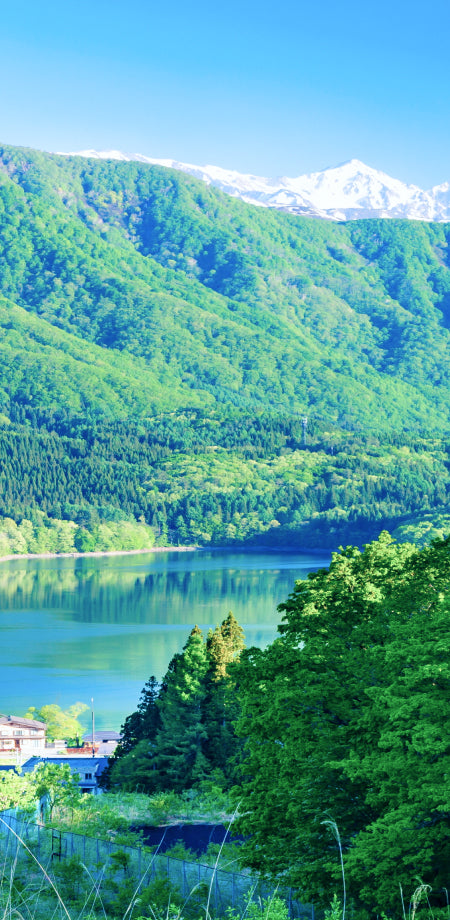投稿日:
更新日:
The fields and mountains in spring are filled with happiness!ShinshuThe breath of the earth is felt by wild vegetables
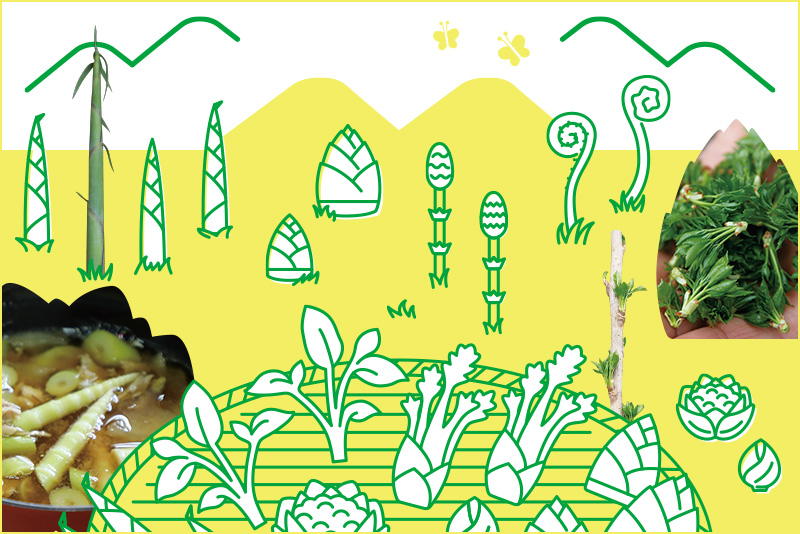
SouthShinshuOkogi, a wild vegetable that conveys a unique food culture
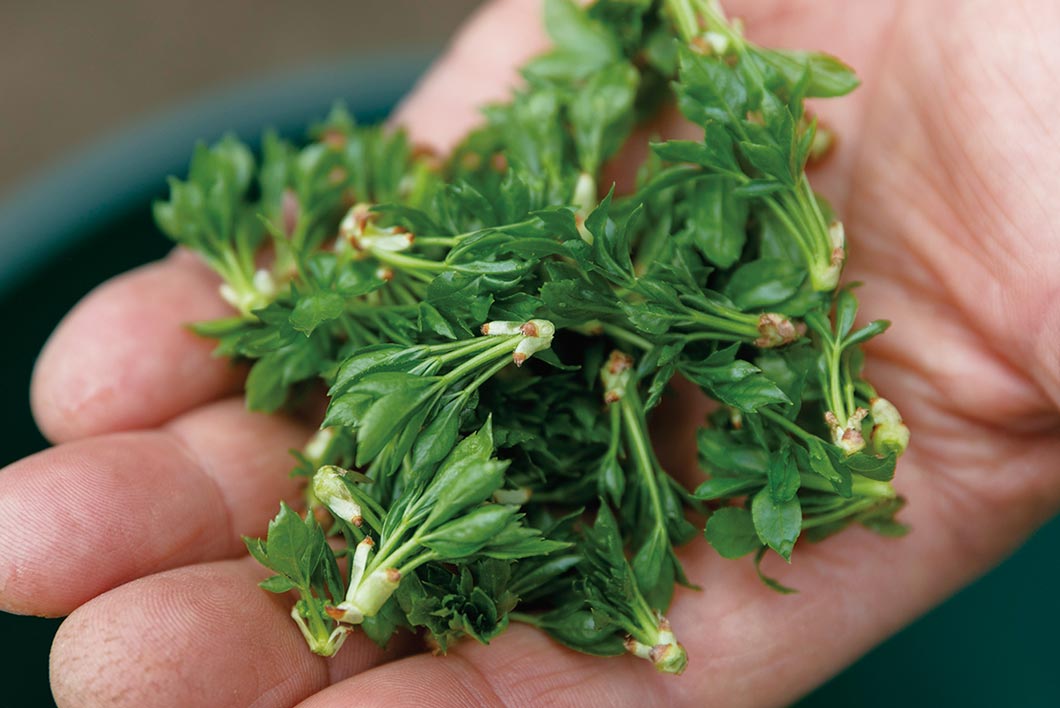
It is generally known as "Ukogi," and "Okogi" is a unique name in the Iida area.
Nomura Keiichi
The snow in the Satoyama gradually began to melt from early March, Nagano In the prefecture, you start to see wild vegetables harvested by local people at direct agricultural products sales outlets, roadside stations, and supermarkets.
Many wild vegetables have earthy flavors, unique scrumptiness, and bittersweetness. This is caused by polyphenols and vegetable alkaloids, and not only makes you feel the arrival of spring, but it also helps us to remove waste from our winter bodies, which have been in a state where we are easily able to store fat to avoid escaping our body temperature in order to survive the cold and harsh winter, and to help us switch to an active body for spring. It is said that eating wild vegetables in spring makes sense, as there is a proverb that "adds a bitter taste to your spring plate."
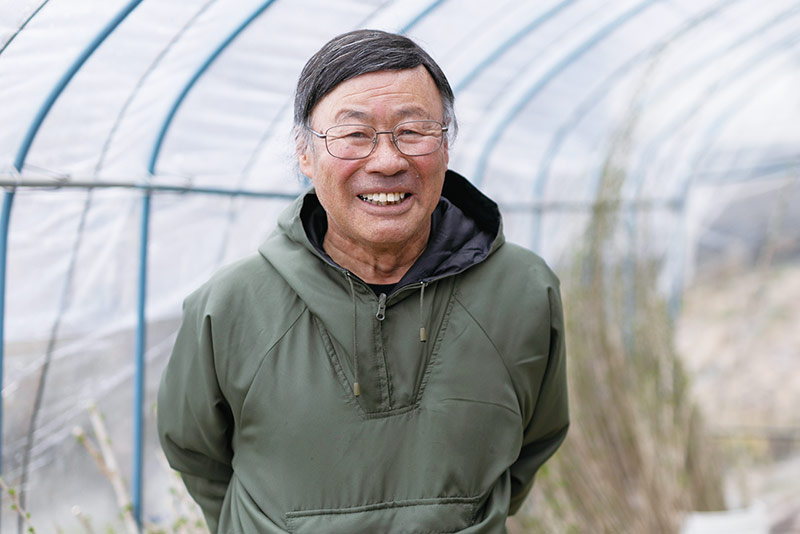
"Even though Okogi has grown larger after the season, it has grown to a great extent, when used as tempura or kakiage, it has a crispy texture and is delicious," says Nomura.
It includes the "fukinoto," which is said to be the first thing that bears awakened from hibernation, as well as "kogomi," "talanome," "warabori," "fuki," "ud," and "rooted bamboo." Nagano The prefecture's fields and mountains are filled with a variety of wild vegetables from spring to early summer, but some of them are only eaten in certain areas. One of them is when spring buds start to sprout, and the southShinshuThe "Ukogi" is the first to feel the arrival of spring. These young shoots of shrubs from the family Scarletaceae, about 1.5 to 2m tall, and are characterized by a taste that is both astringent and bittersweet, a crisp texture, and a vibrant green color. Although it grows wild all over the country, it is said that only the Iida and Shimoina regions, where yamagogi are eaten, and the Okitama region in Yamagata Prefecture, where there are still many stories of the Iida and Shimoina region where the 9th lord of the Yonezawa domain, Uesugi Takayama, encouraged the planting of roe in hedges in preparation for famine.
It is unclear why the culture of eating "okogi" took root in the Iida and Shimoina regions, but since ancient times, each household has harvested and eaten what grows in fields, gardens, banks, etc., and since the early 2000s, direct sales outlets have increased in the region, making them available to markets.
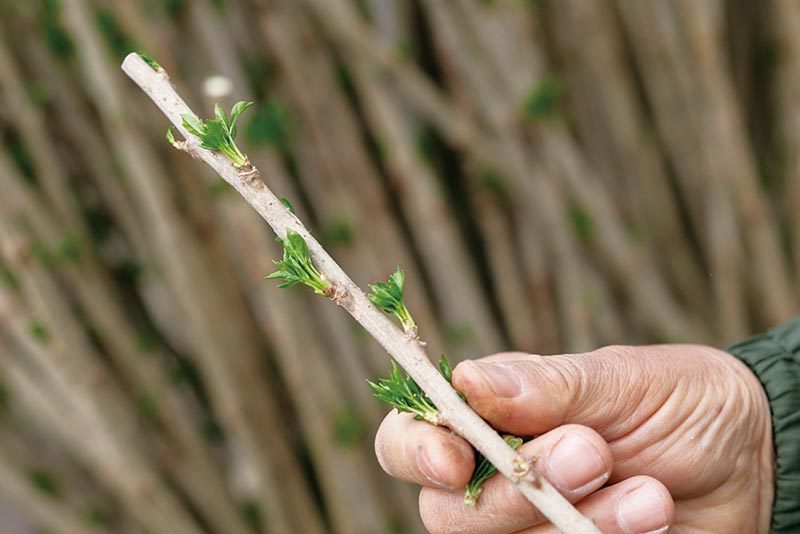
There are only a few farmers in Iida City who are involved in the cultivation of okogi in houses. We carefully harvest each shoot.
Nomura Keiichi of Iida City has been cultivating this "okogi" for a long time, and has been growing it in houses for about 25 years now, and has been one of the first to ship it to direct sales outlets in the area. In a house warmed by utilizing the natural heat from the sun, we grow it by placing the trunks in a bucket filled with spring water that springs from the mountain behind our home, and picking young buds that have been around 1-2cm in size since the beginning of March. Small shoots are softer and easier to eat, and they are said to be softer when grown in houses than open-air plants. "The trunks of oysters have small sharp thorns, so the key is to stroke the trunk with sturdy leather gloves while they are still soft and remove them all," says Nomura. House items will be shipped in early March, and outdoor items will start shipping in early April. The season will be until Golden Week. It is said that when the buds grow, a unique texture called kishiki will be created.

The spring water used for cultivation is said to be the same water system as "Saruku no Izumi", which has been selected as one of the 100 Famous Waters.
The standard way to eat is to soy sauce by dipping it in boiling water for about 5 seconds and pouring bonito flakes and soy sauce on it. In addition to stir-fried or mixed with the syrup, you can also enjoy it by rubbing boiled young shoots with salt and chop them up, and mixing them with freshly cooked rice to taste delicious. If you freeze boiled food, you can enjoy "okogi" for a long time.
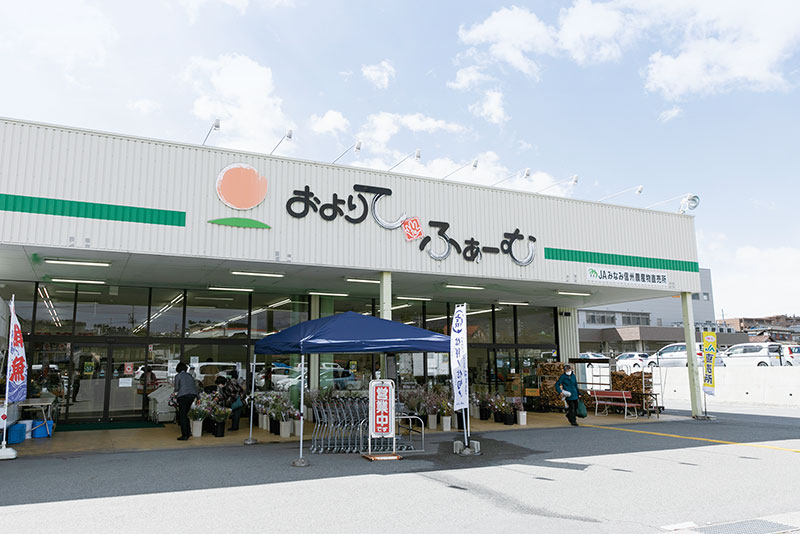
JAみなみShinshuOyorite Farm Agricultural Products Direct Sales Store is run by. We carry a wide range of local agricultural products, and Nomura also ships wild vegetables to Oyorite Farm, including "Okogi," "Kogomi," "Tsubaki," and "Udo."
"The 'kogomi', a wild vegetable that represents spring, grows wild here, but I think it's been around for about 15 years that it has become popular. Perhaps this is because the culture of eating 'okogi' has been firmly rooted in this area," says Nomura. Wild vegetable picking also has a culture rooted in the local area, and it can also be a fleeting thing when you miss the harvest season in the spring mountains and fields, where things change every day, and the season will pass in no time. Why not try the culture that has been passed down from wild vegetables to the local area, and try the seasons unique to the region?
*Spring meals mean trying to eat a spring-like meal. Bitterness refers to wild vegetables and spring vegetables.
[Oyorite Farm Agricultural Products Direct Sales Store]
281 Ding Dong Ding, Iida City TEL 0265-56-2822
http://www.ja-mis.iijan.or.jp/directsales/store.php
NorthShinshuThe bounty of the mountains is "Round-curved bamboo"
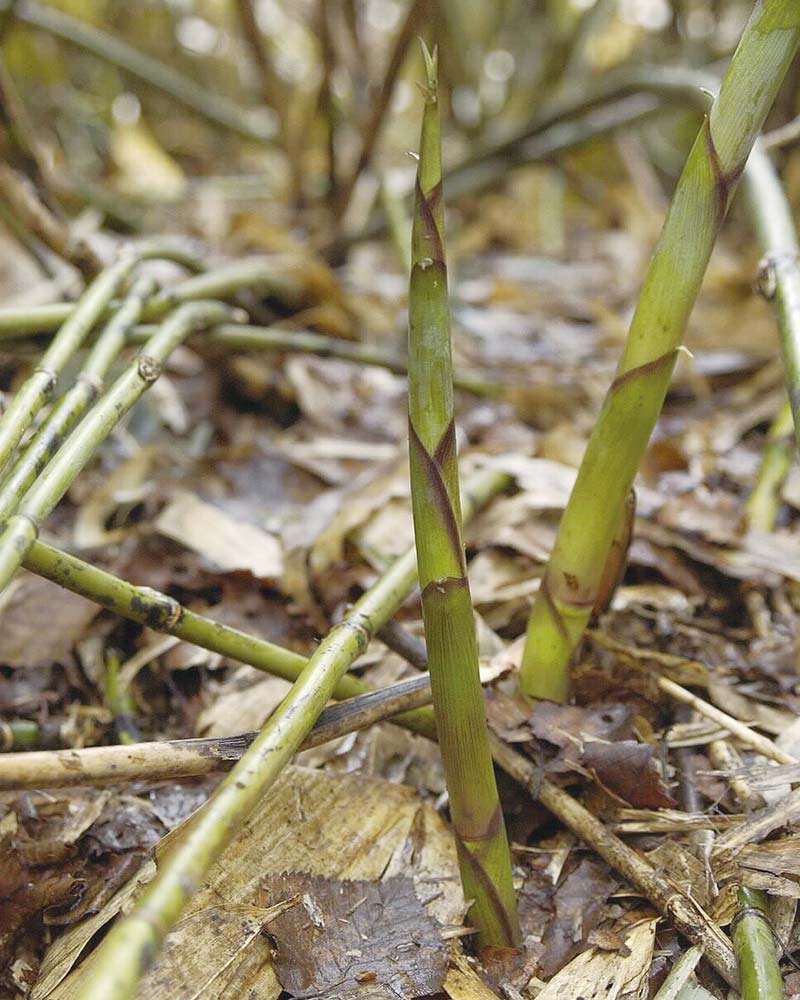
"Round-curved bamboo" that sticks out from the ground. In addition to Nozawa Onsen Village, Shiga Kogen, Yamanouchi Town and Takayama Village are also known as one of the leading producers in the Kitashin region.
The landlady of the house
Tomii Akemi
Root-curved bamboo is the harvest season from May to late June, when the wild vegetable season is approaching its end. NorthShinshuIt is one of the bounties of the mountains that people love. These are large young shoots of bamboo, known as "Chishimasasa," which grows in mountainous areas around 1,000m above sea level on the Sea of Japan side of Sanin, Shinetsu, Tohoku and Hokkaido, and are characterized by their slim shape compared to Moso bamboo, which is often seen in supermarkets. The way it is used is different depending on the region, such as "himetake" in Sanin and "Gassantake" in Yamagata, and "Gatsuyamatake" in each region, and it is deep in snow. Nagano In the Kitashin region of the prefecture, it is popular as the name "root-curved bamboo" because its roots are bent and come out when pushed by snow.
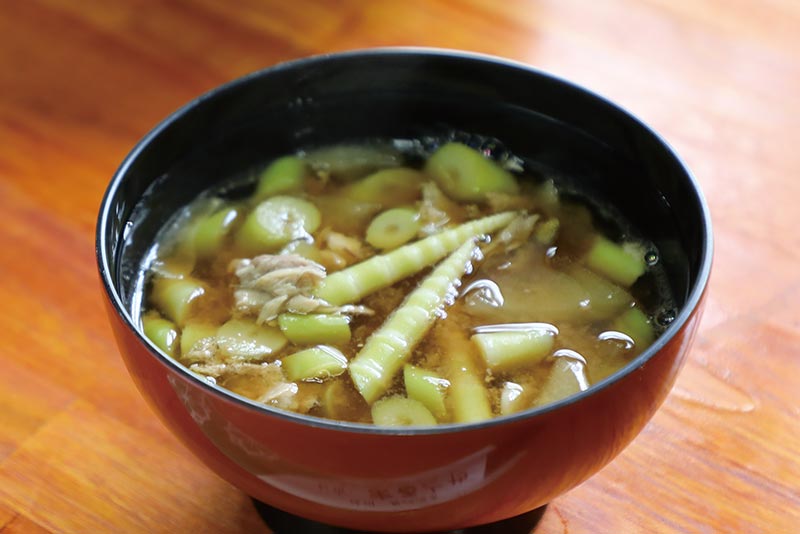
"Takenoko soup" is soul food from the Kitashin region. The flavor and method of making have been passed down at home.
It has a slightly sweet taste with little tingling and a crisp texture, and is characterized by its moderate elasticity. Because there is little bitterness, freshly picked items can be cooked without pre-boiling, and you can enjoy the flavor in a variety of ways, such as stewed dishes, tempura, and unglazed dishes. Among them, NorthShinshuA local dish known as "Takenoko Soup," a miso soup made from "rocked bamboo," with miso and canned mackerel boiled in water.
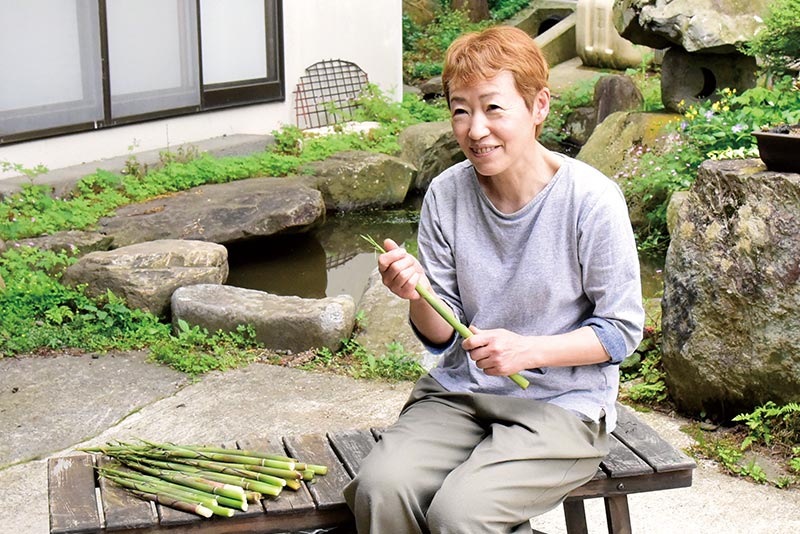
Tomii also taught me how to peel the skin of "curved root bamboo." After breaking the head part, it is said to peel it off by wrapping it around your fingers. You need some tips.
"At first I was very surprised that the thin bamboo shoots and the miso soup contained canned mackerel. I wondered if it didn't smell fishy, so I ate it timidly and it was soft and had little bitterness, and above all, the salty and oily content of the canned mackerel went well with the 'curved bamboo' and miso, which was very tasty," he says. Nagano Tomi Akemi married to Nozawa Onsen Village from Koumi Town, located in the eastern part of the prefecture, and serves as the proprietress of the hot spring inn "Oyado Marutoya."
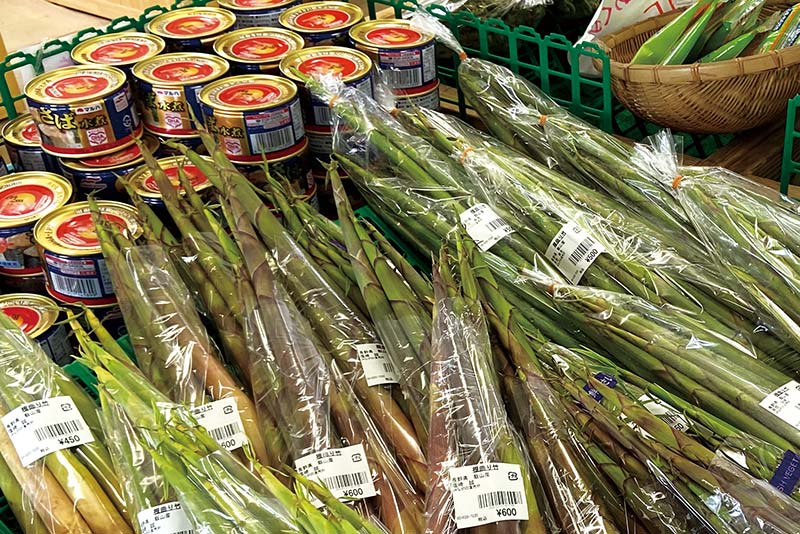
Root-curved bamboo is sold at nearby road stations. Canned mackerel was also on sale nearby.
In areas where "rocked bamboo" is harvested, such as Nozawa Onsen Village and Yamanouchi Town, there is even a mackerel can corner in a corner of a supermarket, and Tomii also buys boxes when the season comes. This is the best combination of canned mackerel and "rocked bamboo" and are essential for early summer dining tables in the Kitashin region.
At the time of year, you can purchase "rock-shaped bamboo" at nearby road stations, but many people enter the mountains themselves, and Nozawa Onsen Village recruits participants for each district to hunt "rock-shaped bamboo" bamboo shoots, and Tomii also participates every year. While swimmering through the sloped slopes of bamboo, which is about as large as the height, it is very laborious to search for "curved bamboo" that grows at the base of bamboo burrows, and the skin and clothes often break from the sharp bamboo or bamboo. Also, "Round-curved bamboo" is a bear's favorite food, so bears to protect them from encountering wild bears is essential.
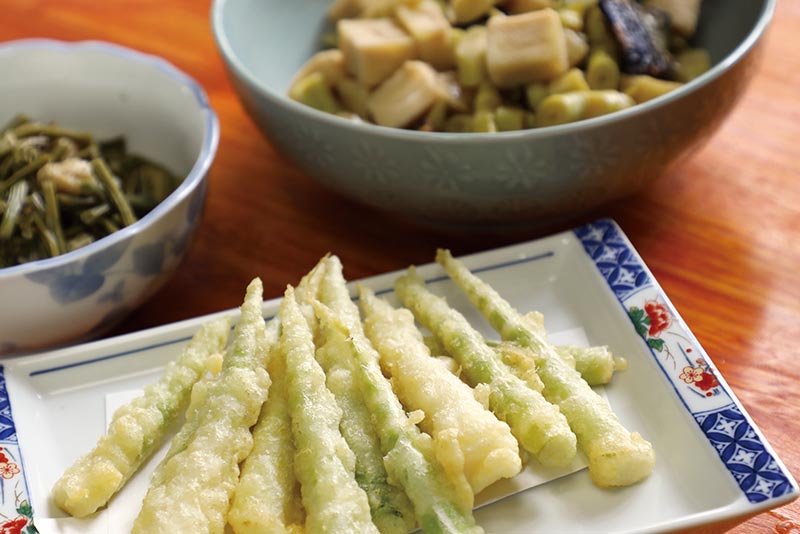
Tomii's homemade "Tempura with bent-tips of root-curved bamboo" and "Stewed with bent-tips of root-curved bamboo and fleshed herring." Tempura is said to be delicious when mixed with powdered cheese and fried, giving it a deep and rich flavor.
The harvested "curved bamboo" becomes harder and harder, so the key is to cook and pre-treat it on the day it is picked. Tomii cooks the "rocked bamboo shoots" he picks, not only "bamboo soup", but also stewed dishes and tempura at the tips, as well as grilled bamboo shoots and cooked rice, and serves them to guests. Tomii's style is to add frozen tofu to the stew. When frozen tofu is fried in water and boiled with bamboo shoots and fleshed herring, it is said that the frozen tofu that absorbs oil will deepen its flavor.
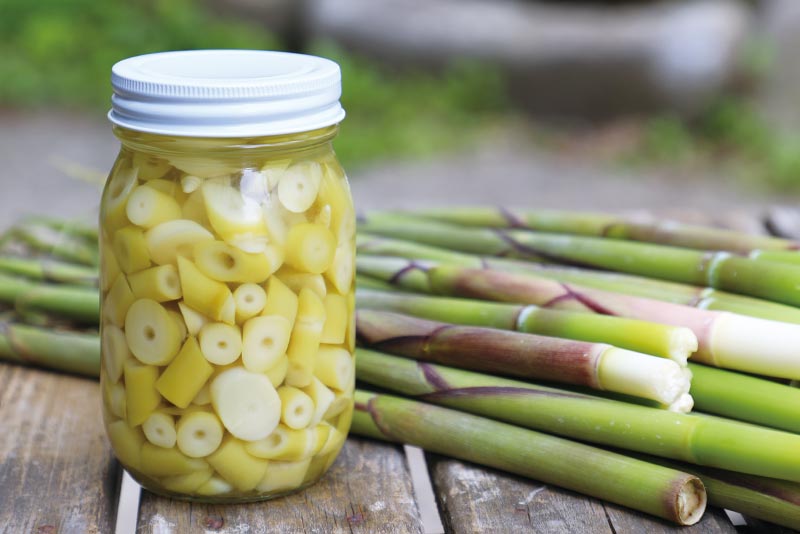
If you cannot eat it immediately after harvesting, it is best to peel the skin on the day you collect it, boil it, and store the cooking liquid in the fridge.
Still, Tomii said, "The recommended way to eat is "take mushroom soup." The ingredients and preparation methods vary from household to household, but it seems that it is also delicious to add tofu and pork to the basic "curved root bamboo" and canned mackerel boiled cans. It is well received by guests, and many people visit Oyamaru Toya every year to find food.
Tomii also holds a sommelier qualification. "Local local sake goes well with local local food. Sake is good, but the dishes made with "Nego-curved bamboo" also go well with light white wines such as Chardonnay, which is brewed in the nearby Takayama village." Why not enjoy the new compatibility of wine and "rocked bamboo"?
Ginza NAGANO You can buy it at
A retort pouch made with "Bamboo Soup" made with "Bento Root Bamboo" and canned mackerel Ginza NAGANO But for sale! First, try the flavor and come and eat freshly picked bamboo during the "Rocked Bamboo."
Ginza NAGANO We also sell seasonal wild vegetables. As the season begins, bent bamboo will also be in stock!
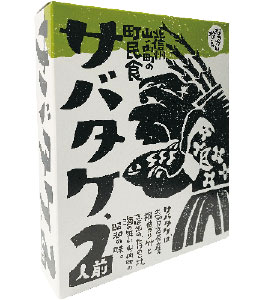
Mackerel
250g x 2 1,199 yen
[Yamanouchi Town General Development Corporation]
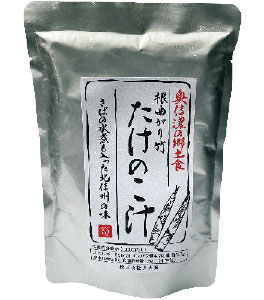
Mackerel bamboo shoot soup
170g 540 yen
[Takasho (Nagano City)]
[One to the house]
9798 Toyogo, Nozawa Onsen Village, Shimotakai District TEL 0269-85-2235
https://kt2062390.wixsite.com/marutoya
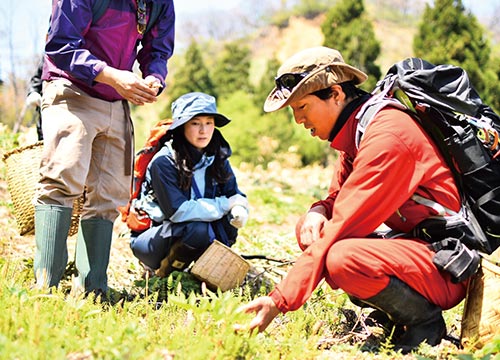
How about hiking wild vegetables?
How about a wild vegetable picking experience that will bring you seasonal mountain merchandise?Shinano TownSunday Planning LAMP will be holding a "wild vegetable picking hike" where you will explore the fields and mountains around Lake Nojiri and harvest approximately 50 types of wild vegetables. Our veteran guide will guide you to the mountains in spring. The wild vegetables they pick are sifted by the restaurant chef and transformed into a luxurious dinner filled with wild vegetables. The taste of the wild vegetables you harvested yourself is exceptional!
[Period] April 17th to June 13th (scheduled)
This article is information as of March 2021.
Please note that the products we carry may have changed.















